Physical Address
304 North Cardinal St.
Dorchester Center, MA 02124
The most important objective is that you become able to recite all the central nervous system items identified in the magnetic resonance images without looking at the labels.
Try to get the nomenclature of the component parts of the basal ganglia into long-term memory. Not easily done!
Because of its clinical importance, you must be able to pop up a mental image of the position and named parts of the internal capsule and to appreciate the continuity of the corona radiata, internal capsule, and crus cerebri (cerebral peduncle).
The surfaces of the two cerebral hemispheres are furrowed by sulci , and the intervening ridges are called gyri . Most of the cerebral cortex forms the walls of sulci and, from the lateral surface of the hemispheres, is concealed from view. Although the patterns of the various sulci vary from brain to brain, some are sufficiently constant to serve as descriptive landmarks. The deepest sulci are the lateral sulcus (Sylvian fissure) and the central sulcus (Rolandic fissure) ( Fig. 2.1A ). These two serve to divide the hemisphere (lateral view) into four lobes with the aid of two imaginary lines, one extending back from the lateral sulcus, the other reaching from the upper end of the parietooccipital sulcus ( Fig. 2.1B ) to a blunt preoccipital notch at the lower border of the hemisphere (the sulcus and notch are labelled in Fig. 2.2 ). The lobes are called frontal , parietal , occipital , and temporal .
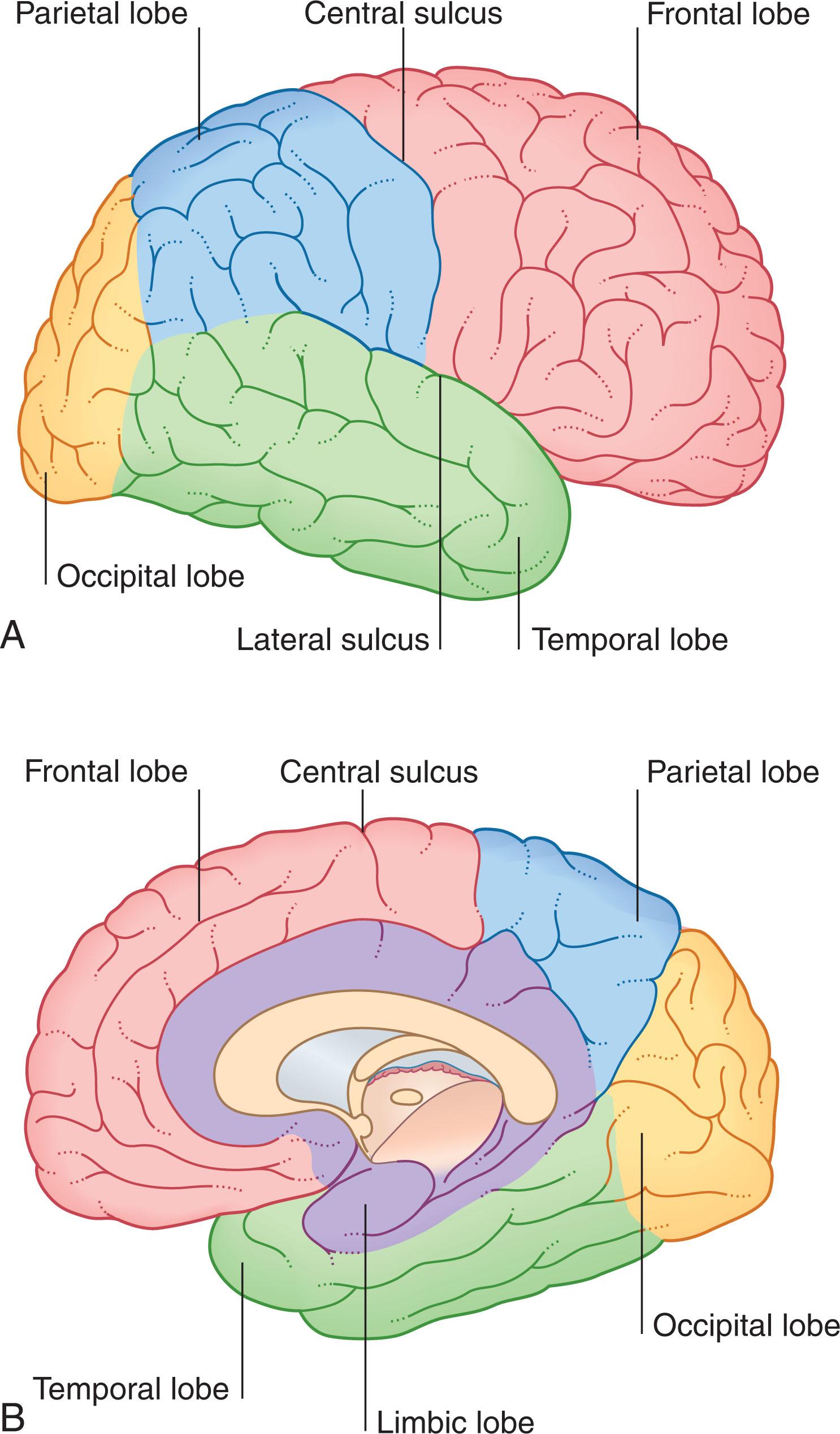
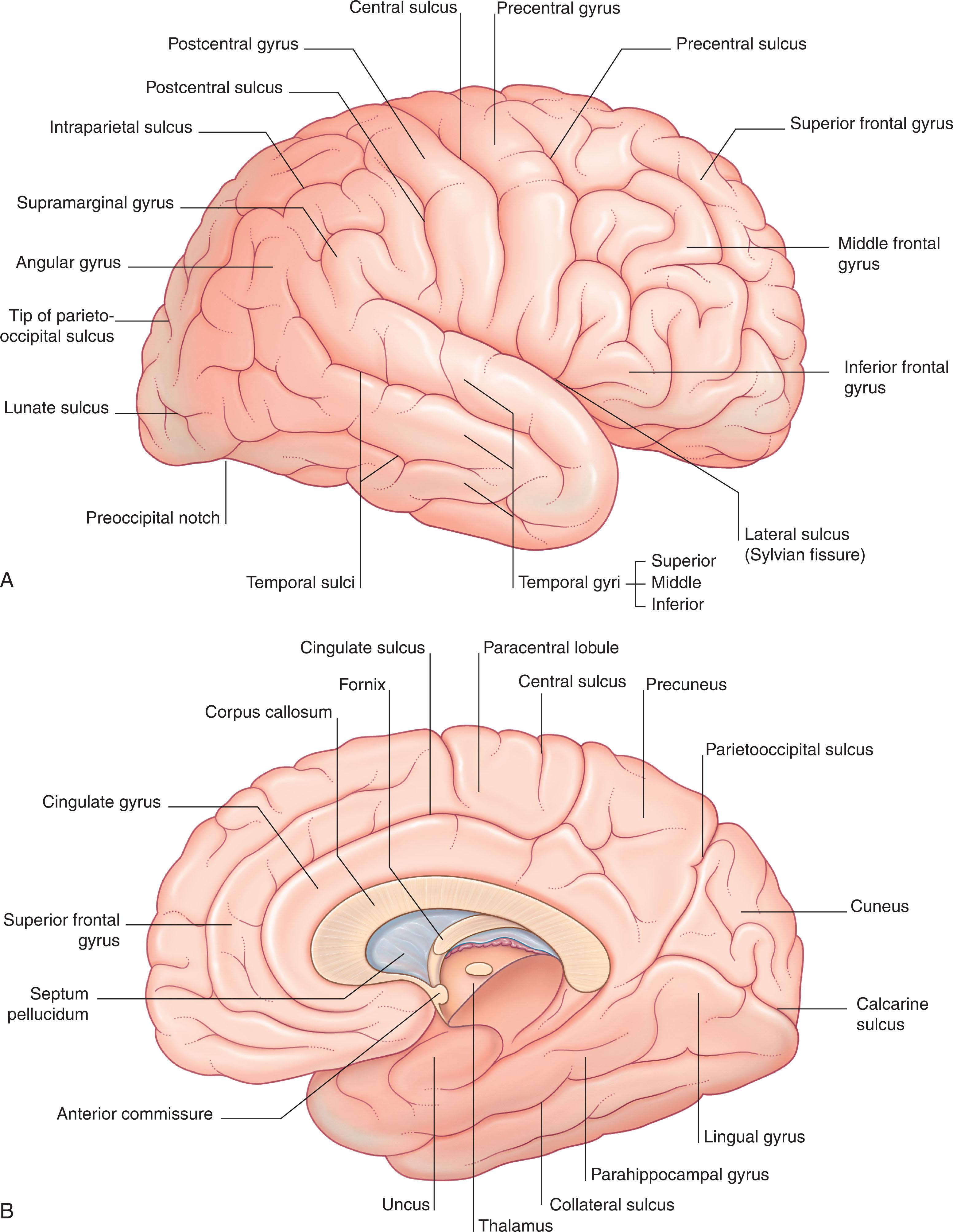
The blunt tips of the frontal, occipital, and temporal lobes are the respective poles of the hemispheres.
The opercula (lips) of the lateral sulcus can be pulled apart to expose the insula ( Fig. 2.3 ). The insula was mentioned in Chapter 1 as being relatively quiescent during prenatal expansion of the telencephalon.
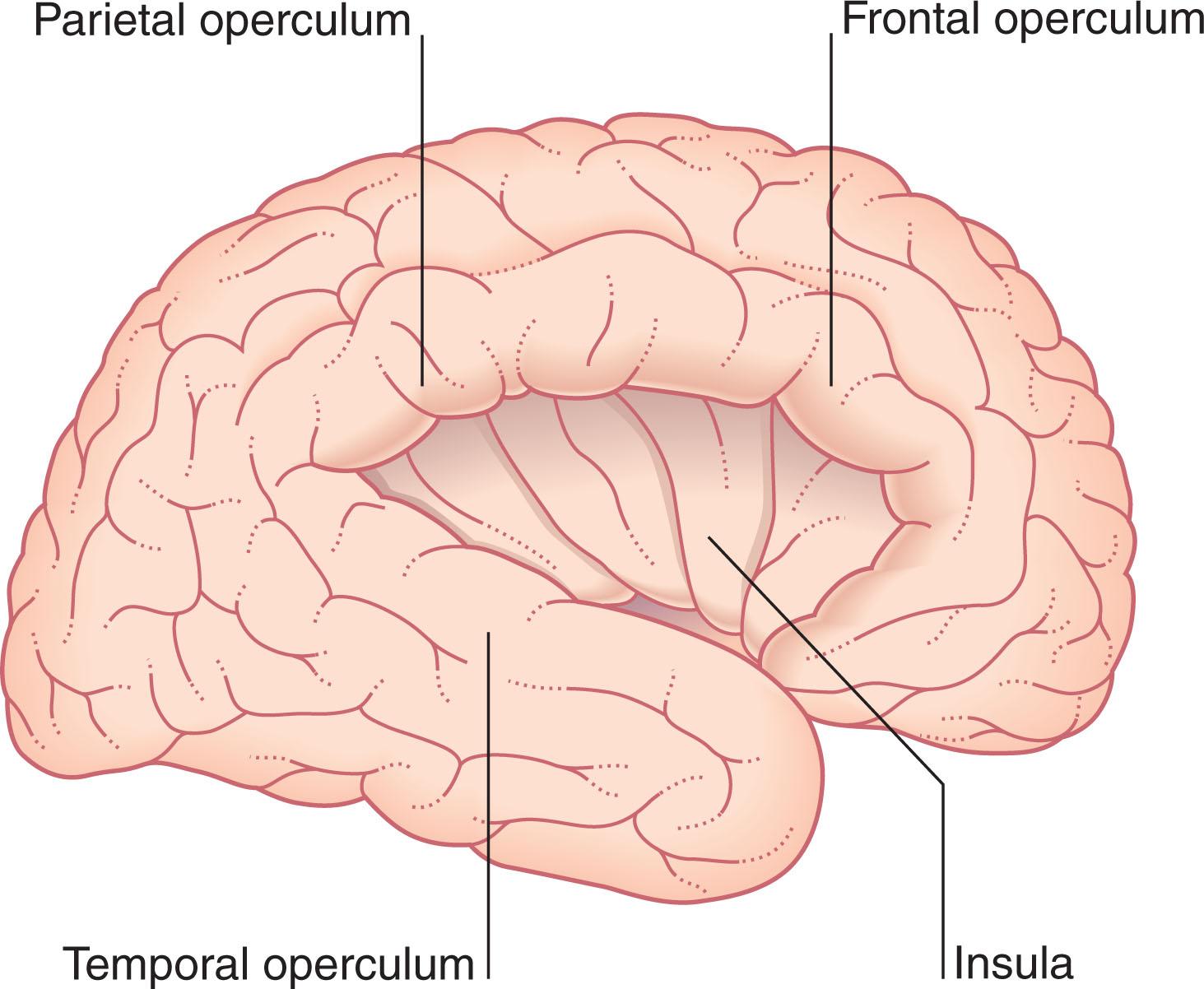
The medial surface of the hemisphere is exposed by sectioning the corpus callosum , a massive band of white matter connecting matching/homotopic areas of the cortex of the two hemispheres. The corpus callosum consists of a rostrum, genu, body and splenium from anterior to posterior. The anterior commissure lies below the rostrum ( Fig. 2.2B ). The frontal lobe lies anterior to a line drawn from the upper end of the central sulcus to the trunk or body of the corpus callosum ( Fig. 2.2B ). The parietal lobe lies behind this line and is separated from the occipital lobe by the parietooccipital sulcus. The temporal lobe lies in front of a line drawn from the preoccipital notch to the splenium of the corpus callosum. Figs. 2.2 and 2.4 to 2.6 should be consulted along with the following description of surface features of the lobes of the brain.
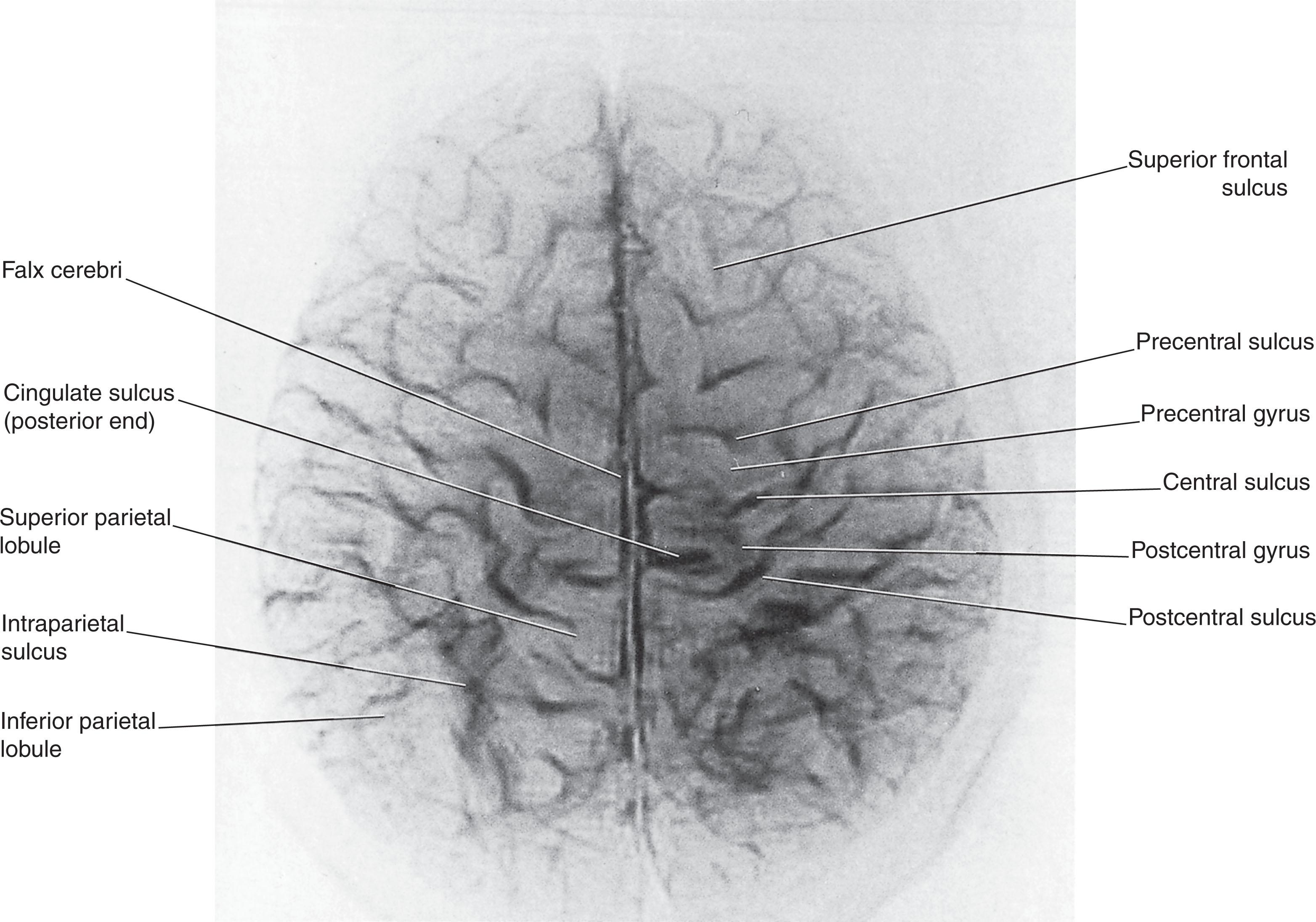
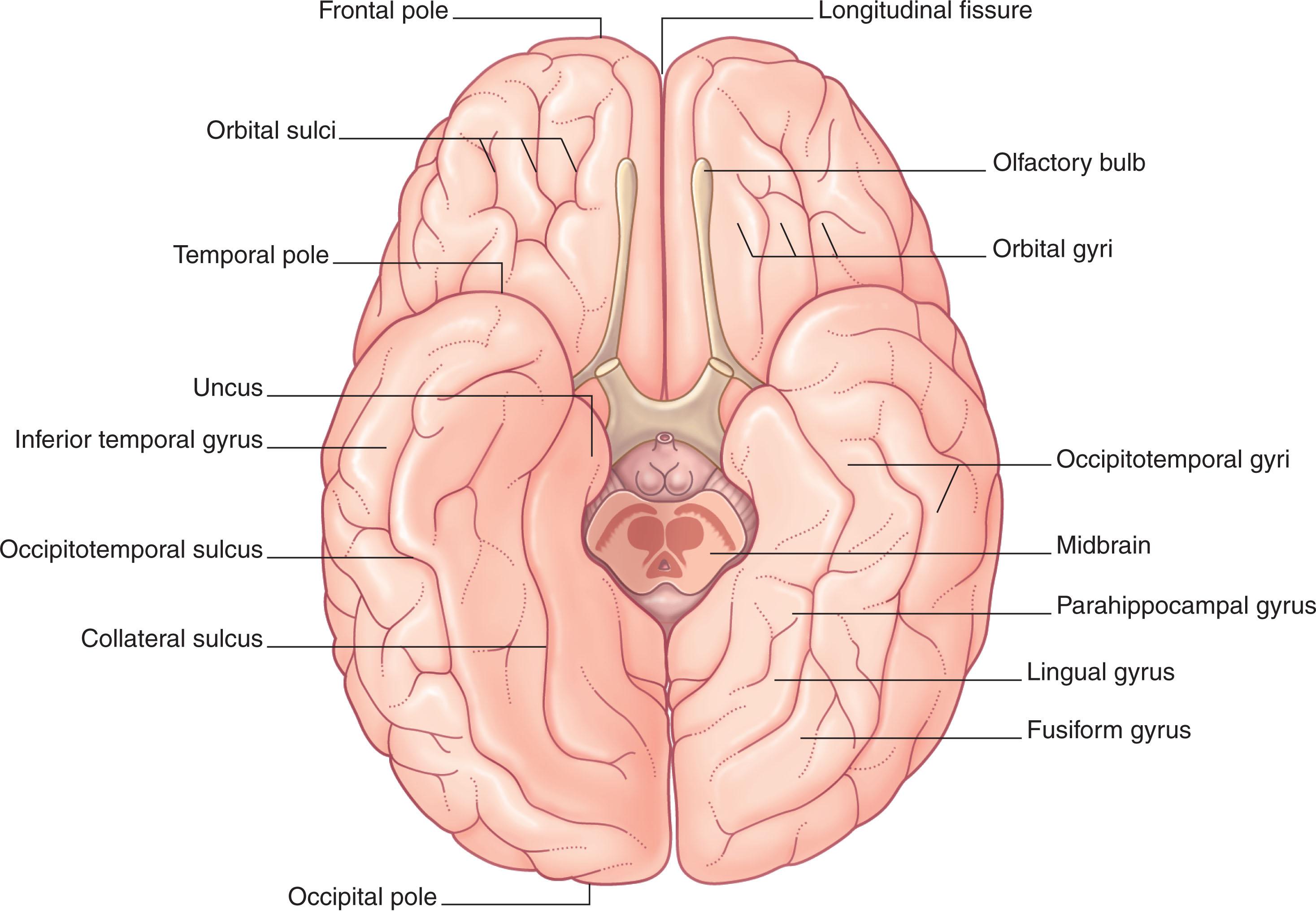
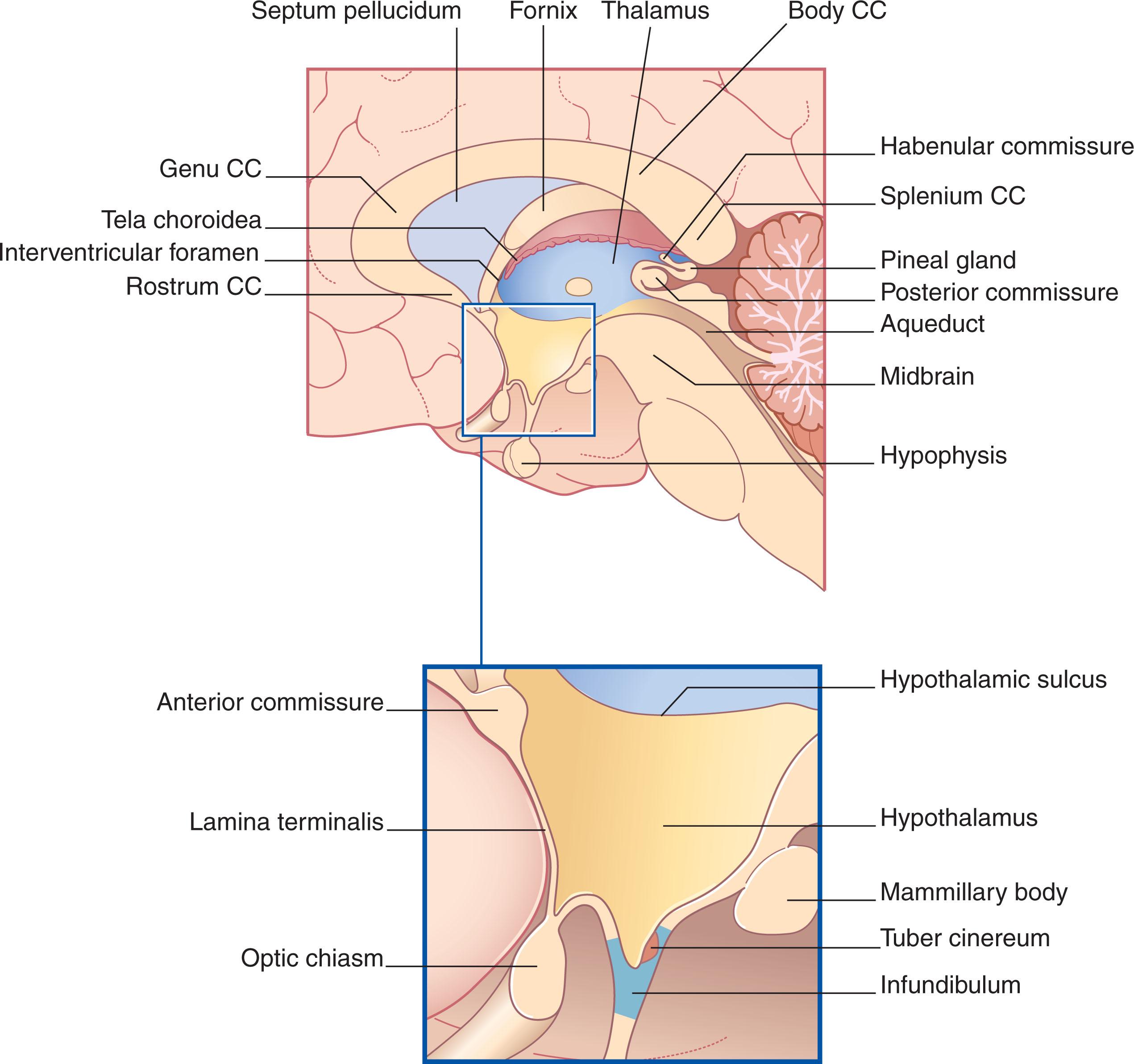
The lateral surface of the frontal lobe contains the precentral gyrus bounded in front by the precentral sulcus . Further forward, superior , middle , and inferior frontal gyri are separated by superior and inferior frontal sulci . On the medial surface, the superior frontal gyrus is separated from the cingulate gyrus by the cingulate sulcus . The inferior or orbital surface is marked by several orbital gyri . In contact with this surface are the olfactory bulb and olfactory tract .
The anterior part of the parietal lobe contains the postcentral gyrus bounded behind by the postcentral sulcus . The posterior parietal lobe is divided into superior and inferior parietal lobules by an intraparietal sulcus . The inferior parietal lobule shows a supramarginal gyrus capping the upturned end of the lateral sulcus, and an angular gyrus capping the superior temporal sulcus.
The medial surface contains the posterior part of the paracentral lobule and, behind this, the precuneus . The paracentral lobule (partly contained in the frontal lobe) is so called because of its relationship to the central sulcus.
The lateral surface of the occipital lobe is marked by several lateral occipital gyri . The medial surface contains the cuneus (‘wedge’) between the parietooccipital sulcus and the important calcarine sulcus . The lingual gyrus lies between the collateral sulcus and the anterior end of the calcarine sulcus. The inferior surface shows three gyri and three sulci. The lateral and medial occipitotemporal gyri are separated by the occipitotemporal sulcus .
Become a Clinical Tree membership for Full access and enjoy Unlimited articles
If you are a member. Log in here